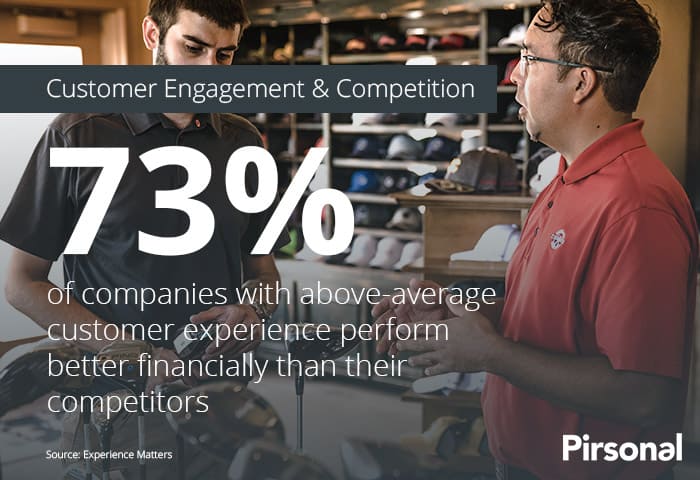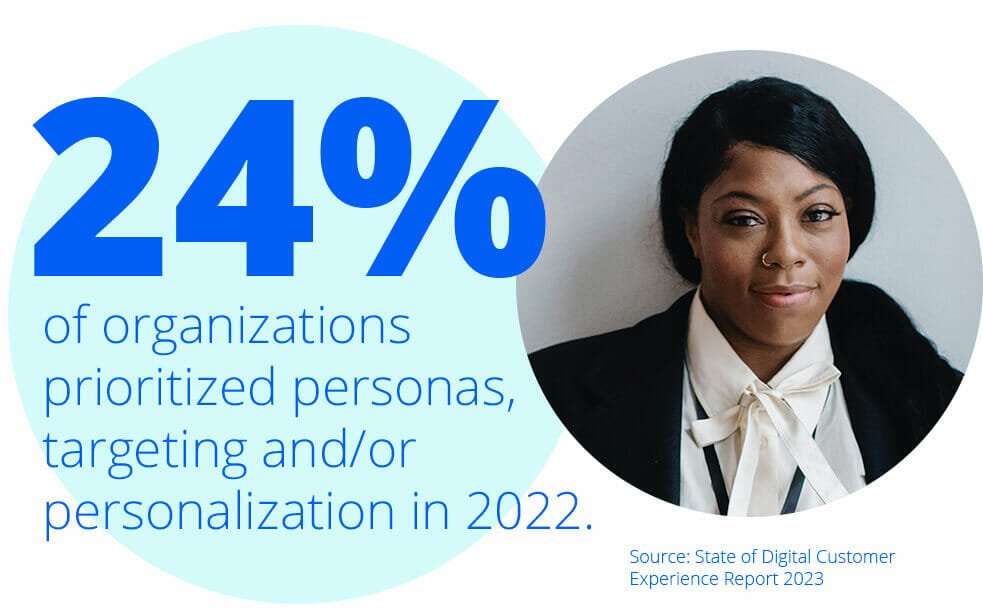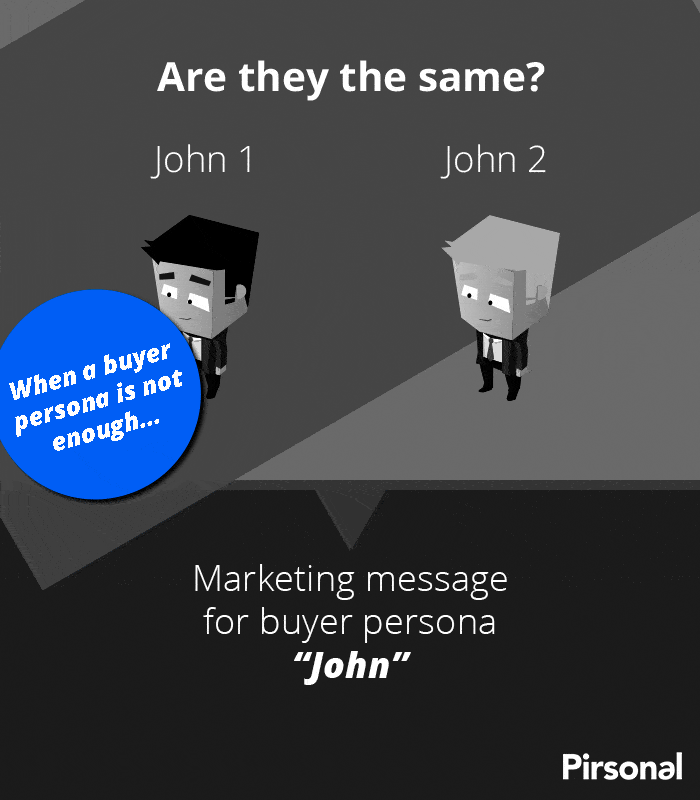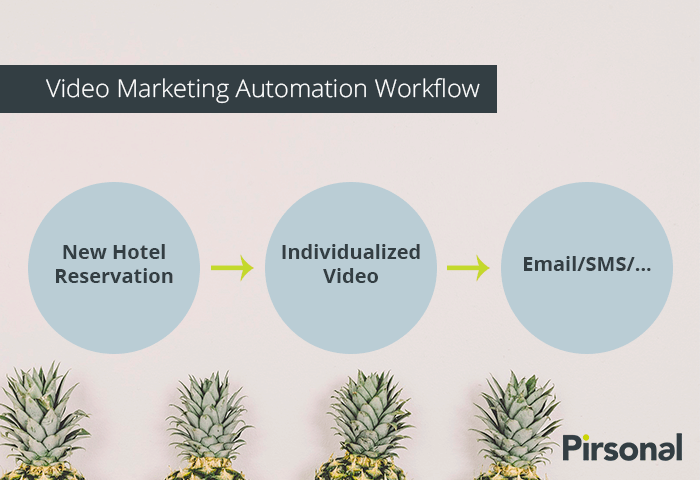Welcome to a world where customer engagement is the key to unlocking remarkable business performance.
To achieve remarkable business performance, you need to keep customer engagement at the core of every action. Here is how:
- Understanding customer.
- Personalizing the customer experience.
- Leveraging technology to engage with clients across the journey.
- Building strong customer relationships.
- Measuring and analyzing customer engagement.
Sure, there are more areas that can help your business flourish.
However, these are some of the key aspects that will help any business succeed, no matter the industry, size, and type of target audience.
This has been my experience over the last two decades of serving and working with other businesses.
Let’s cover in detail the five best practices that will empower you to drive customer engagement and elevate your business performance to new heights.
Best Practice 1: Understanding Your Customers
To embark on a journey of effective customer engagement, it is crucial to first understand your target audience.
Nowadays, most experienced marketing leaders want to build strong, long-lasting relationships with customers.
So they think that personalization will fix all the poor performance of their engagement initiatives.
However, many miss the most important thing: Understanding customers.
This knowledge forms the foundation for crafting personalized customer experiences that resonate with your customers on a deeper level.

73% of companies with above-average customer experience perform better financially than their competitors
When you identify customer demographics, conduct comprehensive market research, and understand your customer’s context, you gain valuable insights into their preferences, needs, and pain points.
There is no better way to create an effective customer engagement strategy than truly knowing your customer audiences.
If you do this consistently, the result will be engaged customers and repeat business.
To Understand Your Customers, Gather Customer Data—Here Is How
To truly understand your customers, you need to collect and analyze relevant data.
Many companies do this in one run.
For example, when a lead submits a lead generation form or when someone buys a product or service.
However, we need to remember that engagement takes place across the customer lifecycle.
You get to know your target customers better when you interact with them through different touchpoints.
I know my wife way better now than 20 years ago. It’s that simple.
Take this into account: In B2C this lifecycle tends to be shorter than in B2B marketing, except for products that require more budget and research.
Then, to create a customer engagement strategy that helps your business grow, it’s more effective to collect data from various customer interactions.
But not just gather any type of customer data. Gather the information that will help you achieve your business goals with greater performance.
To effectively do this, ask yourself these questions:
- What information will help us create relevant content and messages that better relate to our customers so that they take action?
- What information will help us deliver a personalized customer experience so that our product or service is sticky?
- What information will help us increase sales and improve customer retention by anticipating customer needs in the purchase journeys?
This can be done through two types of information, no matter if we are talking about first-party data or data provided by another organization:
- Structured data: These often are CRM fields like first name, country, and position. This is what you will commonly find in personalized emails.
- Contextual data: This is what the information really means to both the customer and your organization. For instance, in B2B marketing, a C-level lead has different needs and decision-making power than an entry-level manager. In B2C, a couple has different expectations about the weekend when compared to a family of 5 also enjoying a hotel stay.
Ways to Gather Customer Data
With this in mind, here are a few effective methods for gathering customer data.
Surveys and Feedback
Surveys and feedback forms are excellent tools for collecting quantitative and qualitative data.
By asking targeted questions, you can gain insights into customer preferences, satisfaction levels, and areas for improvement.
Encourage customers to provide honest feedback and offer incentives to increase participation rates.
Customer Interviews
Conducting one-on-one interviews with your customers allows for in-depth conversations and a deeper understanding of their needs and motivations.
Prepare a list of open-ended questions and actively listen to their responses.
These interviews can uncover valuable insights that may not be captured through surveys alone.
Similarly, I’ve found that sales video calls are real gold. Potential customers share their needs, concerns, pain points and more.
After attending multiple sales conversations, you can identify patterns that can improve customer service and attract more customers through enhanced marketing.
Social Media Listening
Social media platforms offer a treasure trove of information about your customers. Monitor conversations, comments, and reviews related to your brand or industry.
This approach can provide real-time feedback and help you identify trends, pain points, and opportunities for engagement.
I can’t say I’m the most active person through social media channels. However, I do consume content to identify trends and opportunities.
Marketing Automation, Email, and Analytics
This is one of my favorites. Email marketing is one of the main one-to-one marketing channels in B2B and B2C.
When you measure email open rates, click-through rates, and other important marketing metrics, you can also gather data about preferences and interests.
You can also use the Ask Method or similar strategies to ask questions.
Simply ask customers to click on the desired answer.
Watch the following video to learn an effective segmentation and data-gathering strategy I use inspired by the Ask Method.
Use these strategies to create personalized messages, no matter the type of content. From personalized videos to emails.
Analyzing Customer Data
Once you have gathered the necessary data, it’s essential to analyze it effectively. Here are some key aspects to consider during the analysis:
Segmentation and Micro-segmentation
Segmenting your customer base into distinct groups allows for targeted marketing strategies.
Identify common characteristics, such as demographics, behavior patterns, or purchasing preferences.
This segmentation enables you to start with personalization in customer marketing and provides more effective communication.
If you have the time and resources, take it a step further. That’s when you are micro-segmenting.
Watch the following video to learn more about micro-segmentation.
Customer Behavior Patterns
Analyze customer behavior patterns to understand their buying habits, browsing patterns, purchase journeys and engagement with your brand.
Identify which touchpoints have the most impact on their decision-making process.
This knowledge can guide your marketing efforts and help you optimize customer journeys.
Identifying Pain Points
By analyzing customer feedback and interactions, you can identify pain points in their experience.
Whether it’s a boring email campaign or a lack of product options, addressing these pain points shows your customers that you value their feedback and are committed to improvement.
Building Customer Personas
Customer personas are fictional representations of your ideal customers. They provide a clear picture of who your customers are and what they need.

They are extremely useful but often seem to be the forgotten aspect of many customer engagement tactics, I’m afraid.
This is why 24% of organizations are prioritizing personas targeting and personalization according to the State of Digital Customer Experience Report.
If you already use customer personas in your customer engagement strategy, it’s time to take it to the next level. Take a look a what I call augmented buyer personas instead.

If you haven’t started with normal customer personas yet, here’s how to build effective customer personas:
Demographics and Psychographics
Start by outlining the demographic characteristics of your target audience, such as age, gender, location, and income level.
Then delve into their psychographics, including their interests, values, aspirations, and lifestyle choices.
Needs and Goals
Identify the specific needs and goals of your customers.
Here are a few questions that will help you do this:
- What problems are they trying to solve?
- What are their primary objectives?
- Have they found any blockers or obstacles in the past related to these needs and goals?
By aligning your communication with customers, and products or services with these needs and goals, you can position yourself as a valuable solution provider.
Preferences and Influences
Understand your customers’ preferences and the factors that influence their decision-making process.
Are they influenced by social media, online reviews, or recommendations from their leadership, friends, and family?
This insight allows you to develop effective marketing campaigns and engagement strategies.
This comprehensive understanding helps you tailor your offerings and messaging to their unique needs.
Best Practice 2: Personalizing the Customer Experience
In an era of hyper-personalization, generic approaches no longer suffice.
Customers seek tailored experiences that make them feel valued and understood.

By leveraging customer data, you can create personalized marketing campaigns, recommend relevant products or services, and provide individualized support.
Personalization fosters a sense of connection, boosting customer loyalty and driving business growth.
Here is how to personalize the customer experience
First, understand what it entails. The customer experience encompasses every touchpoint a customer has with a business, from initial brand awareness to post-purchase interactions.
Take the following infographic as an example. It shows how a hotel improves its marketing by creating personalized videos for guests when they make a reservation.

It includes various elements such as customer service, product quality, website usability, and marketing communications.
When you analyze each stage of the customer journey, you can identify opportunities for personalization and create a seamless experience.
Watch the following video now to get many ideas to personalize the customer experience, and increase engagement as a result.
As you can see, every stage of the customer journey brings new engagement opportunities.
These opportunities can help your business grow as the interactions between your business and your customers become more effective.
Collecting Customer Data Ethically
As I mentioned earlier, collecting customer data is a fundamental aspect of personalization.
However, it is crucial to collect and handle this data ethically to ensure customer trust and comply with data protection regulations.
Here are some key considerations when collecting customer data:
Consent and Transparency
Businesses should clearly communicate why data is being collected, how it will be used, and provide options for customers to control their data preferences.
Transparency builds trust and empowers customers to make informed decisions about sharing their personal information.
Secure Data Storage
Businesses must invest in robust data security measures to protect sensitive information from unauthorized access, breaches, or misuse.
Implementing encryption, access controls, and regular security audits can help mitigate data security risks.
Best Practice 3: Leveraging Technology for Customer Engagement
Technology plays a pivotal role in customer engagement.
Customer Relationship Management (CRM) systems enable efficient management of customer interactions, helping you nurture relationships and streamline processes.
At the same time, automation and AI-powered tools enhance engagement by delivering personalized content, analyzing customer behavior, and providing real-time support.
Simply put, technology helps you scale.
For instance, with Pirsonal’s personalized video software, busy marketing teams can automatically create videos for customers.

The Integration of Customer Relationship Management (CRM) Systems
By integrating CRM systems with other technologies like AI, video personalization software, and analytics, businesses gain a holistic view of their customers.
For example, with Pirsonal Player, brands can track how individual viewers interact with a personalized video.
This data can be updated into a marketing tool like HubSpot, Salesforce, or Marketo in real time thanks to Pirsonal’s API.
This way, marketers can know when a specific customer has seen an interactive personalized video or clicked on a video call-to-action (CTA).
When you integrate marketing and customer engagement platforms, your marketing becomes more responsive and dynamic.
This integration helps businesses tailor their interactions, monitor customer journeys, and provide consistent experiences across various channels, improving customer engagement and loyalty.
Best Practice 4: Building Strong Customer Relationships
Effective communication strategies, such as proactive outreach and responsive customer service, lay the groundwork for strong connections.
This is one of the beauties of marketing automation.
It helps businesses be customer-centric and efficient in the way they interact with customers.
Establishing loyalty programs incentivizes repeat business and encourages customers to become brand advocates. By prioritizing relationship-building, you cultivate a loyal customer base that fuels your business performance.
Recommendations to build stronger customer relationships:
Building a Customer-Centric Culture
Creating a customer-centric culture starts from the top. Leadership must prioritize customer service and set an example for the entire organization.
Foster a culture that values customer satisfaction and encourages every employee to go the extra mile to exceed customer expectations.
Align your company’s vision, mission, and values with a strong focus on delivering exceptional customer experiences.
Training and Empowering Your Customer Service Team
Invest in training programs to equip them with the necessary skills and knowledge to handle customer inquiries, resolve issues effectively, and provide personalized support.
Empower your team with the authority to make decisions that benefit the customer and create a sense of ownership in delivering exceptional service.
Leveraging Technology for Enhanced Customer Service
Centralize customer data and enable personalized interactions.
Use live chat, chatbots, personalized videos, and social media platforms to provide instant support and engage with customers in real time.
Leverage automation tools to streamline processes and enhance efficiency without compromising the human touch.
Proactive Communication and Personalization
Practice proactive communication by keeping customers informed about relevant updates, new products or services, and any potential issues.
Personalize your interactions by using customer data to tailor your communication and offer relevant recommendations.
Show genuine interest in your customers’ needs and make them feel valued.
Best Practice 5: Measuring and Analyzing Customer Engagement
To optimize customer engagement for business growth, it is essential to measure and analyze key metrics.
Tracking customer satisfaction, retention rates, and engagement levels provides valuable insights into the effectiveness of your strategies.
By making data-driven improvements based on customer feedback and sentiment analysis, you continuously refine your approaches and enhance the overall customer experience.
AI tools make this way easier and accessible to anyone. Including your competitors. So you better start now.
Mitigating Risks and Making Informed Decisions
Data analytics allows businesses to detect early customer churn, identify potential risks, and make informed decisions based on data-driven insights.
When you analyze historical data and real-time information, your organizations can decrease the churn rate and respond promptly to emerging customer engagement threats.
This proactive approach strengthens business resilience and safeguards reputation.
Integrating Data Analytics into Business Strategy
To maximize the benefits of data analytics, integrate it into the overall business strategy.
To do this, you need to create a culture based on data, improve your marketing, invest in appropriate tools and technology, and encourage cooperation between data analysts, business owners, sales, and IT teams.
When you align data analytics with strategic objectives, you can unlock your strategy’s full potential and achieve sustainable growth.
Takeaways
By implementing these five best practices, you can create a customer-centric business that excels in engagement and drives exceptional business performance.
Remember, the journey toward success begins by understanding your customers, personalizing their experiences, leveraging technology, nurturing relationships, and continuously measuring and analyzing your efforts.

